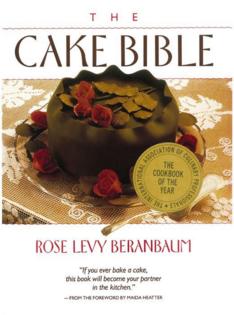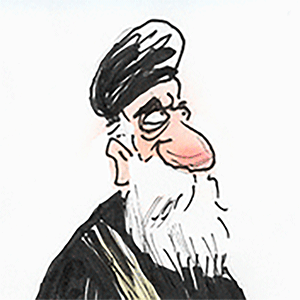Revised edition of revolutionary 'Cake Bible' is precise, not persnickety
Published in Variety Menu
Someone once asked Rose Levy Beranbaum the eternal question: Chocolate or vanilla.
“Lemon,” Beranbaum said.
The subject was cakes, as it often is with Beranbaum, author of the James Beard Award-winning “The Cake Bible” and 13 other books. She told her interviewer that she could only pick a favorite from each of two categories: chocolate and non-chocolate.
Her favorite non-chocolate cake is a Triple Lemon Velvet Bundt Cake. Her favorite chocolate cake is what she calls the Chocolate Domingo Cake. Both are in the revised and updated 35th anniversary edition of “The Cake Bible,” which came out recently.
The Domingo cake — named for her favorite opera singer, Placido Domingo — is one of the recipes that was revised and updated, even though she originally thought it could not be improved.
But she took out a little of the sour cream in the original version and replaced it with boiling water, which releases the flavor of the cocoa in the cake. Placido Domingo himself tasted the cake and sent her a wire from Spain to say “Bravo.”
When “The Cake Bible” was first published in 1988, it was revolutionary. It literally changed the way people baked cakes.
Before the book came out, it was standard procedure to cream butter and sugar together before adding the dry ingredients. The reverse creaming method mixes the dry ingredients first before adding the butter with just a small amount of liquid; the rest of the liquid is added later, with the eggs.
“The butter coats the flour particles, protecting them from becoming too tough. So the texture is very tender, but not too tender. It’s just the ideal way to do it,” she says.
She is quick to point out that people used a similar method with shortening during World War II, when butter was not available, but that she was the first to figure out how to do it successfully with butter.
Reverse creaming alone would have been enough to place her name in the annals of baking, but “The Cake Bible” revolutionized the art in other ways, too.
She was the first American to insist on including metric weights for measuring, because they are so much more precise than ounces and cups. And she also takes credit for most producers of baking chocolate now listing the percentage of cacao on each bar, if in a roundabout way.
She translated the French book “A Passion for Chocolate” into English, including the authors’ insistence on using chocolate with the correct amount of cacao for each dish. A San Francisco doctor, Robert Steinberg, read the book and traveled to France to meet the authors and learn about chocolate.
When he came back to the States, he founded the Scharffen Berger chocolate company and, at her urging, put the percentage of cacao on their bars. Other American companies soon followed suit.
Part of Beranbaum’s background is in food science, which informs the way she approaches recipes. For instance, white chocolate is one-third sugar by weight. When she uses it in place of dark chocolate in a recipe, she calculates how much sugar to subtract from the ingredients to keep it proportionately perfect.
She obsesses about the details. So perhaps it is not a surprise that when it first came out — it was her first book — she dictated the entire 1,000-page manuscript into a tape recorder. That way she could listen to it as she closely read the proofs as a way to catch any errors.
The effort was worth it, she says. The 592-page book did not have a single error.
She thought she would never have to change or revise it in any way. But then times changed. Cake pans, which were always 1½ inches high, are now made 2 inches high. And because farmers are now using younger chickens to lay their eggs, the amount of yolk in each egg has diminished.
Her husband, Woody Wolston, who has worked on the last several books with her, says that yolks used to be two-fifths of an egg, and whites were three-fifths. But now, yolks make up as little as one-fifth of an egg, a potentially huge difference for the exacting cake baker.
“If you’re making a cheesecake that required six yolks, you may (now) need nine,” he says.
So her books now list how many whites and how many yolks to use — and it’s not always the same number — and they say how much of each to use by weight.
Of course, you could just use whole eggs in your cakes without weighing them first, but that will affect the final product.
“We are kind of the opposite of everybody else who wants to make it quick and easy, and don’t worry about the results,” she says.
“I want it slow and difficult.”
It’s the only way to achieve perfection.
©2024 STLtoday.com. Distributed by Tribune Content Agency, LLC.










Comments